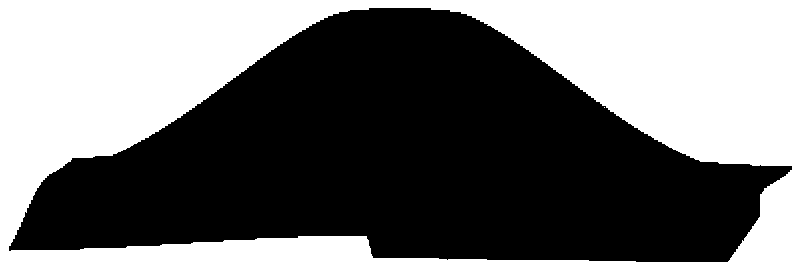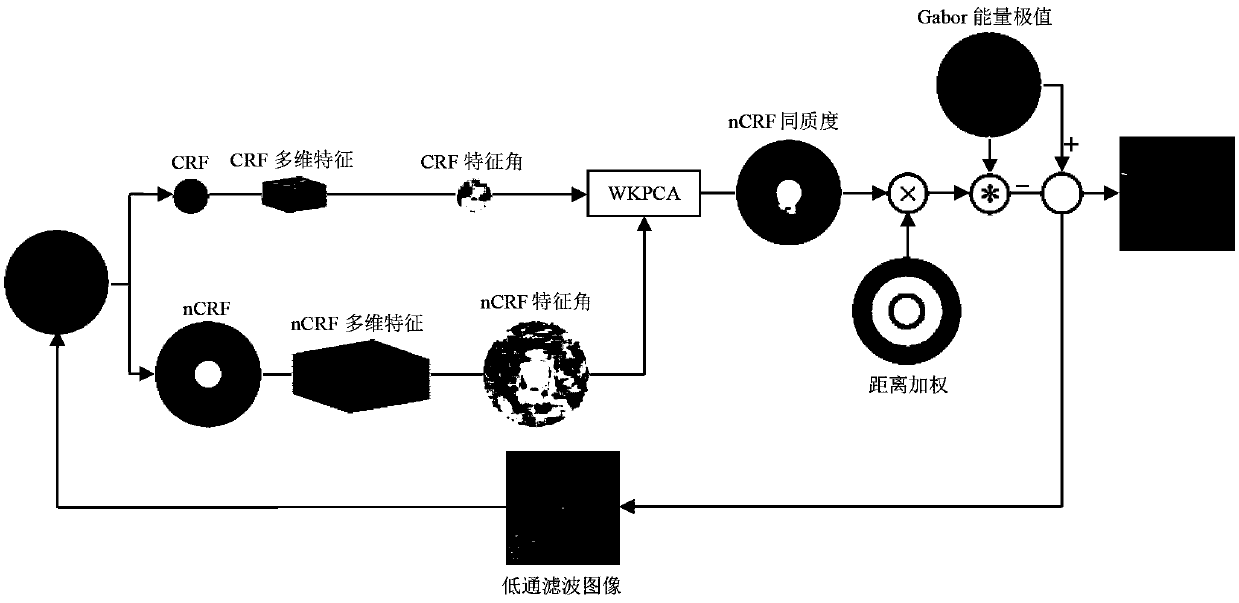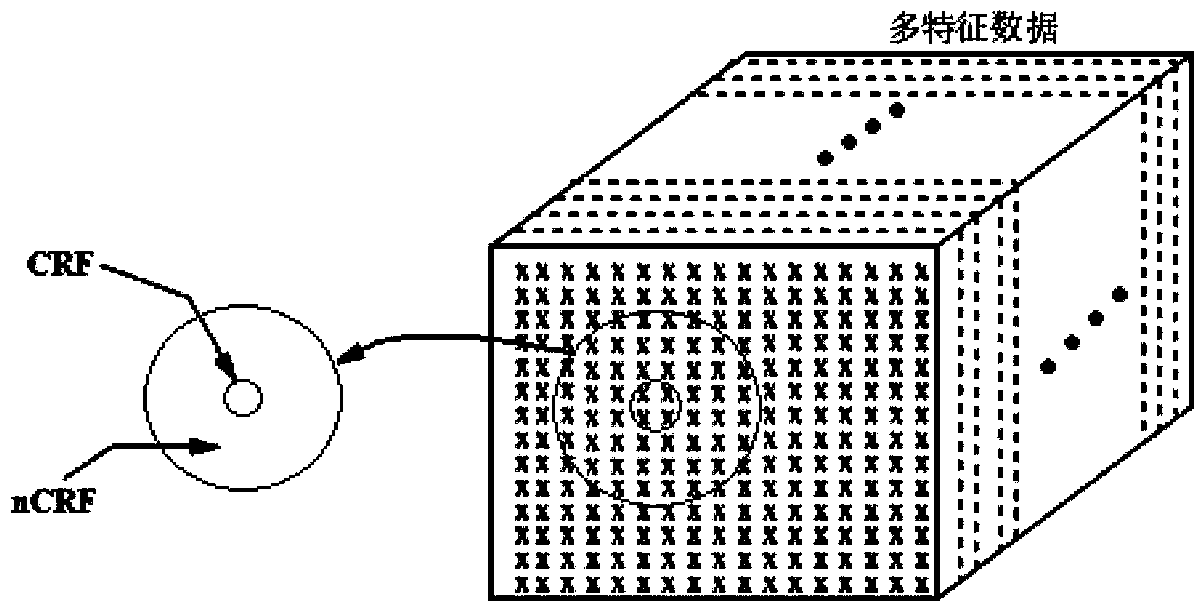A WKPCA homogeneity-corrected NCRF-suppressed salient contour extraction method for low-light images
A low-light image, contour extraction technology, applied in image analysis, image enhancement, image data processing and other directions, can solve problems such as differential weighting suppression, to improve the degree of suppression, weaken abnormal feature data and noise interference, and improve accuracy. Effect
- Summary
- Abstract
- Description
- Claims
- Application Information
AI Technical Summary
Problems solved by technology
Method used
Image
Examples
Embodiment Construction
[0019] The application will be further described below in conjunction with the accompanying drawings.
[0020] 1. nCRF environmental suppression:
[0021] The two-dimensional Gabor function can effectively describe the receptive field profile of simple cells in the visual cortex, and can well simulate the basic characteristics of typical complex cells through the response mode (Gabor energy) of parity to simple receptive field filters. These complex cells can be regarded as local azimuth energy operators, and the maximum value of complex cell activities can be used to accurately locate the edges and lines of graphics. Therefore, the present invention uses Gabor energy to simulate the response of complex cells. The two-dimensional Gabor filter is expressed as follows.
[0022]
[0023] in θ is the preferred orientation of the CRF; is the difference; Depend on and Represents the odd-even Gabor filter; the aspect ratio γ determines the eccentricity of the Gaussian e...
PUM
 Login to View More
Login to View More Abstract
Description
Claims
Application Information
 Login to View More
Login to View More - R&D
- Intellectual Property
- Life Sciences
- Materials
- Tech Scout
- Unparalleled Data Quality
- Higher Quality Content
- 60% Fewer Hallucinations
Browse by: Latest US Patents, China's latest patents, Technical Efficacy Thesaurus, Application Domain, Technology Topic, Popular Technical Reports.
© 2025 PatSnap. All rights reserved.Legal|Privacy policy|Modern Slavery Act Transparency Statement|Sitemap|About US| Contact US: help@patsnap.com



